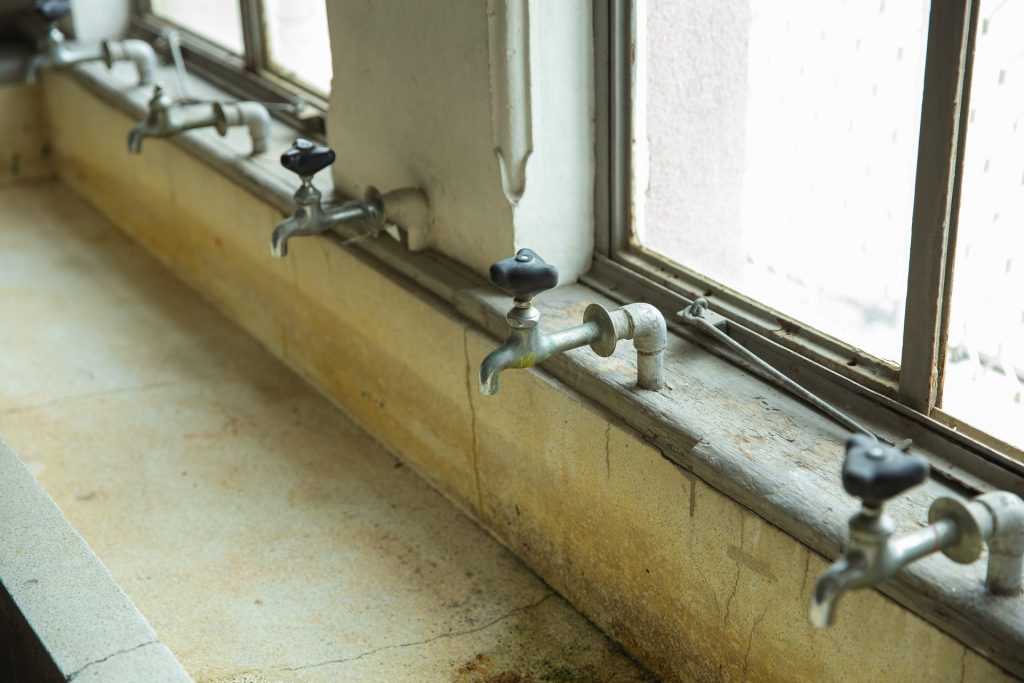Indoor mold is not just harmful to human health but it can also be destructive to buildings. Unfortunately, mold can quickly grow in damp areas that have porous, plant-based materials. Commercial buildings have many areas with these conditions, making them conducive to microbial growth.
Mold often grows undetected, and by the time it becomes visible, it may have already spread over a large area. When this happens, it’s best to call professional mold remediation specialists with extensive experience in mold removal for commercial properties.
What You Need to Know About Mold
Mold often emerges at the heels of a burst pipe or leaky roof. They start as spores: lightweight and are often so small that they’re invisible, strong gusts of wind can carry them indoors. Unfortunately, mold spores can cling to clothes, shoes, pets’ furs, and the wheels of shopping carts.
Spores are so common that it’s safe to assume spores are lying in wait on carpets, upholstery, tapestries, drywall, and even on wallpaper. When water enters the equation – if the carpet or ceiling gets drenched because of a burst pipe or leaky roof, the spores will take root and grow into mold.
It only takes 72 hours for mold to grow when spores land on a wet surface. This is why spills should be mopped immediately, and condensation, pipe defects, and other leak sources addressed as soon as possible.
Signs That A Building Has Mold
The most telling signs of mold infestation are its musty smell and the distinctive black, brown, green, purple, orange, and yellow spots on the affected surfaces.
Rooms with mold in the ceiling or walls smell often have a musty, damp odor. If the smell persists despite diligent cleaning and disinfection, mold is likely to grow hidden somewhere in the area.
Mold that grows out in the open is easy to spot. Look out for furry, dark spots that cluster in an area that’s usually damp or had recently been drenched in water. Speaking of which, the walls, floors, and ceilings showing signs of water damage can become breeding grounds for mold. Monitor those spots until you are confident that they have completely dried out.
The Negative Effects of Mold On A Commercial Building
When mold grows in a commercial building, it can cause cosmetic, structural, and long-term financial problems for the building owners, administrators, and tenants.
Cosmetic Damage
- Discoloration on wood, synthetic wood, tiles, concrete, and marble
- Visible stains on affected surfaces (traces stay even after mold remediation)
- Warping of wood panels and drywall
- Deterioration and rapid rotting of building materials made of wood
Structural Damage
- Deterioration and rapid rotting of load-bearing structures and walls
- Damage to insulating materials that help seal the building envelope
- Holes on exterior walls, allowing insects, vermin, and destructive small animals like raccoons to enter the building
Legal Problems
- Tenants or guests who suffer respiratory diseases and other health problems due to hidden mold might file complaints against the building owners and managers.
- Tenants may file lawsuits for damaged equipment and other possessions due to undetected mold in areas that should have been the building’s responsibility to clean and maintain.
- Building owners and managers may face penalties for violating due diligence responsibilities to tenants and investors.
Marketing Challenges
- Tenants avoid buildings with mold issues
- Customers avoid businesses that appear unkempt and unclean
- Tenants will protest rent increases
- Tenants might look for alternative rental options for the same price
- Low occupancy rate
- Reduction in property value
Other Problems
- Low indoor air quality
- Additional expense for the building owner and tenants (if their lease agreements categorize mold removal as a shared expense)
Image and reputation are essential in business, especially when leasing to small business owners and corporate clients. However, mold spores are everywhere; it’s nearly impossible to eliminate them completely because they can make their way inside by clinging to people, vehicles, and objects brought into the building.
So what should building owners and managers do if a mold problem emerges despite their best efforts to prevent it?
What To Do When There’s Mold In Your Building
- Minimize the risk of contaminants spreading throughout the building by containing the affected area and bagging and throwing away the objects already damaged by the mold.
- Inform all tenants of the discovery, especially those directly affected by the mold.
- Appease and reassure your tenants by hiring mold remediation experts to kill the infestation as soon as possible.
- Consult contractors or builders with experience in mold remediation and damage restoration.
- Meet with the tenants and agree on the date for mold remediation and construction crews can work on the problem. Their presence might interrupt the business activities in the building, so everybody should be aware ahead of time.
- Contact your insurance company to file claims on policies that cover mold remediation and repairs.
While there may likely be concerns to address for each unique commercial building, these are generally the must-do’s immediately after discovering mold.
Contact Our Mold Remediation Experts in Metro Detroit
Anytime mold becomes a problem in your building, our mold removal, and commercial property restoration experts can take care of it for you. Restoration 1 is known nationwide for its unparalleled mold remediation and related services. Our lines are open 24/7, so don’t hesitate to contact us if you have an emergency. We provide everything you need to eliminate mold from your premises and get your business back on track.
Call Restoration 1 of Metro Detroit at (734) 336-1633 or fill out our contact form to schedule a visit from our crew.


